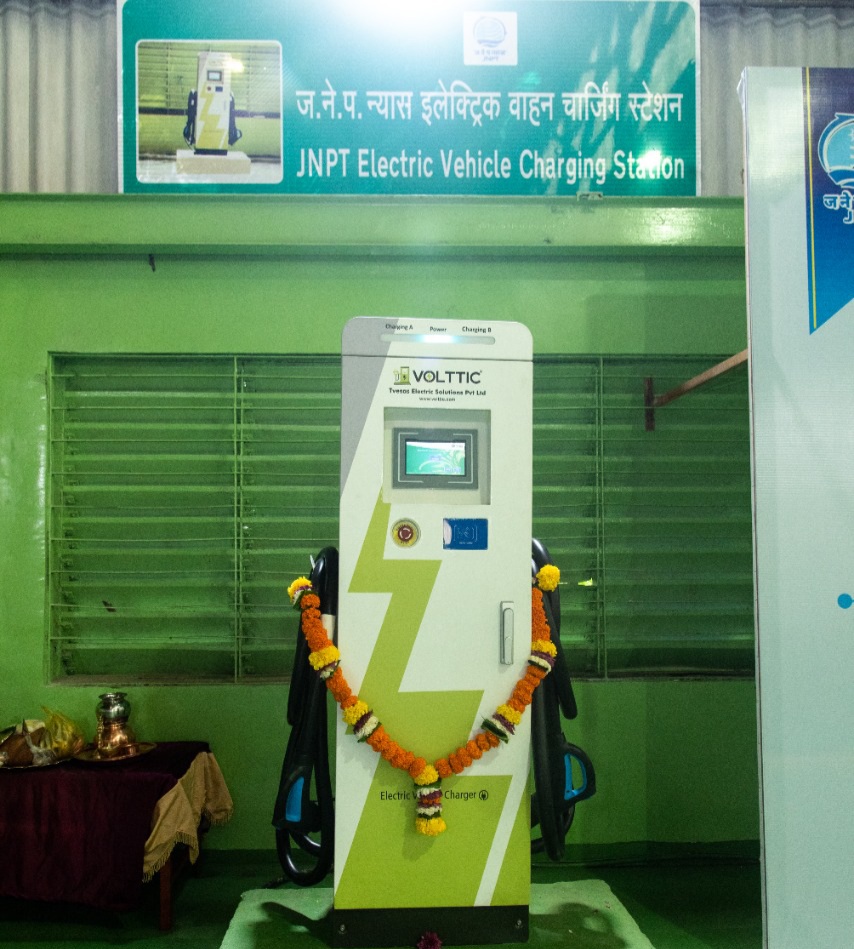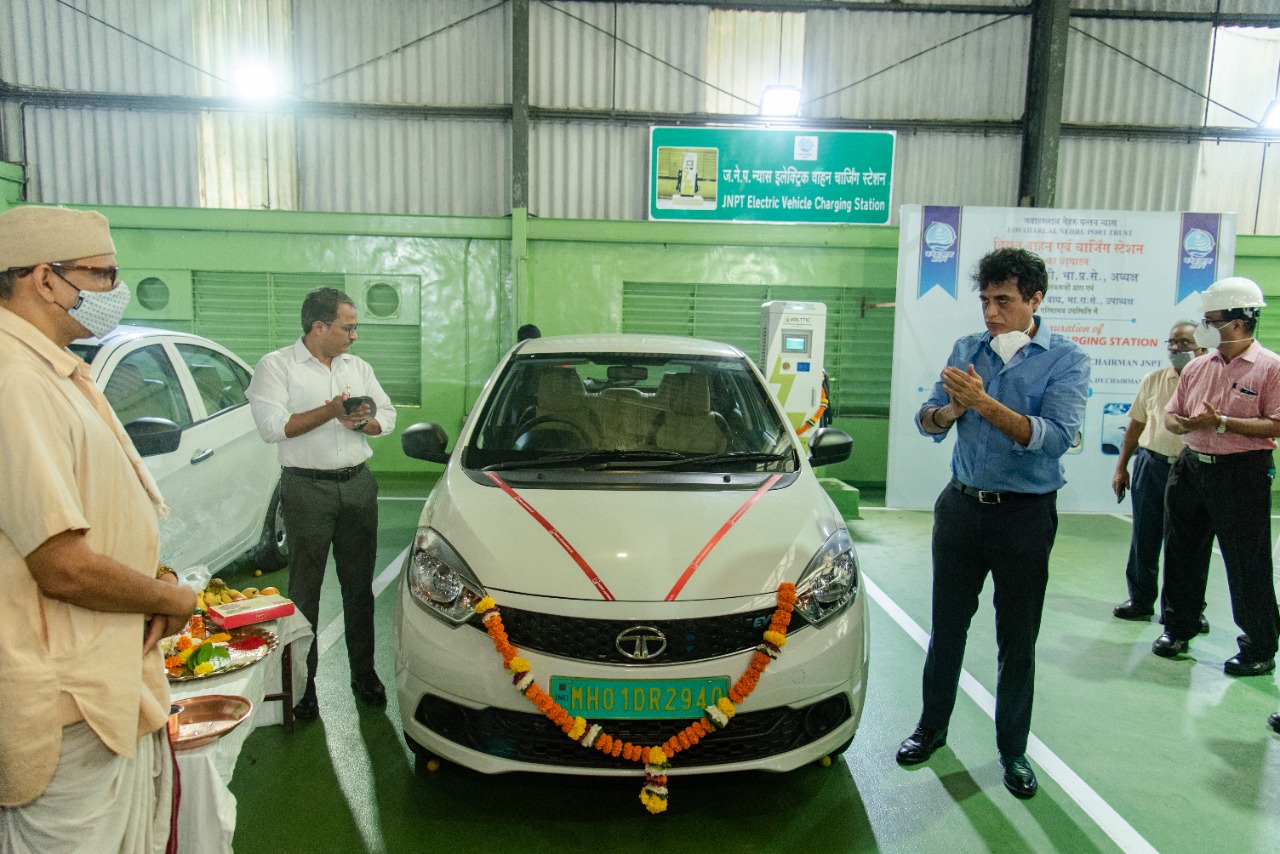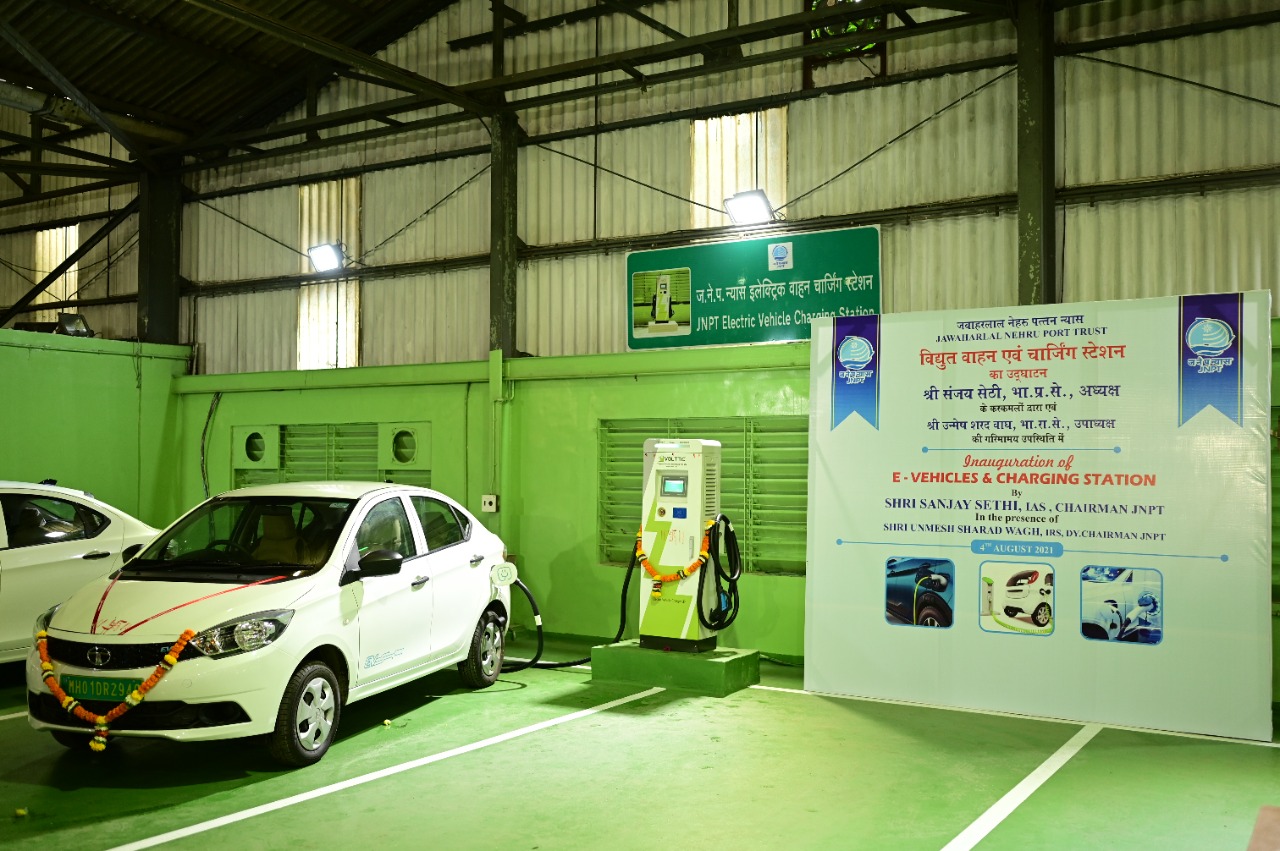Environmental Management at JNPA
Jawaharlal Nehru port is committed to sustainable development and adequate measures are being taken to maintain ecological balance. The port has received many awards towards its green efforts. The total land available with JNPA is around 3402 hectares out of this, 1147 hectares area (34%) of the port is under green cover including mangroves. The port’s ecosystem consists of rich and diversified flora and fauna. To address the Global climate change problem at port level, the Port has taken up the initiative to acquire “Green Port Status”.
As per the direction of Ministry of Shipping GoI on Green Port Initiative, JN Port has prepared an action plan covering all activities of the Port including cargo handling, storing, evacuation and many other activities related to environmental protection. The Port has also prepared and implemented the Environment Management and Monitoring Plan (EMMP). Some of the Green Port Initiatives include operationalization of new Sewage Treatment Plant, Monitoring of Environmental Management Plan, Development of Eco Park, Green Skill Training, projects related to using of renewable energy, Energy saving /conservation projects, facility to respond to an oil spill of Tier I magnitude, marine conservancy, comprehensive plantation, Prohibition of disposal of all kind of garbage in the sea, MARPOL provisions and sustainable development and operation.
Port activity is mainly a combination of Seaside and landside traffic handling and involves continuous movement of vehicles and ships. Vehicle and Ship movement are the main polluters as far as green House gas emission is concerned. The port has ambitious development plans of increasing the port's capacity by another 5 Million TEUs in container handling and also to develop port-based industries in the backup area. The development activities and Port’s core cargo handling activities are focused on sustainability measures targeting the triple bottom line; i.e Ecological stability, Social aspects and Economic efficiency. To achieve the status of “A Green Port” the Port’s Operational and developmental activities are detailed forwards:
Enhancing Port’s capacity in a sustainable way.
Determining efficient management processes to reduce waste and emissions, conserve resources, and improve efficiencies and productivity.
Implementation of environmental safeguards in all operations in the port.
Reduction in the effects of emissions of Green House Gases by a continuing process of afforestation, Mangroves protection etc.
Improving the performance of energy-related operations.
Switching over to use of Non-conventional energy sources.
Introducing water and energy conservation plans.
Introduction of Diesel emission reduction programme.
Training and awareness.
Taking care of other integrated preventive measures including,
Mapping of other emission and pollutants
Chemicals pollution management
Disaster mitigation
The Port’s environmental efforts for sustainable development:
These development plans may bring almost adverse environmental impacts on the port’s environment. In order to develop the port in a sustainable way, Port’s developmental plans are synchronized with the Coastal Zone Management and Land Use Plans. The Coastal Zone Management Plan is based on the MoEF&CC’s CRZ notification 1991.
The JN Port’s CZMP is complete in all respects and also meets the goals of the ICZM, viz
Maintaining the functional integrity of the coastal resource systems.
Reducing resource-use conflicts.
Maintaining the health of the environment.
Facilitating the progress of multi-sectoral development.
The CZMP of the port has been approved in the year 2005. Based on the approved CZMP the port has taken up various developmental plans. The projects are taken up after detailed Environmental Impact assessment and due approvals of the MoEF&CC or MCZMA as per the applicability. The environmental monitoring is done during the execution of the projects and compliance report is submitted to the concerned authorities (MOEF&CC, MPCB etc.).
Macro and Micro Monitoring of the Coastal Zone Management at the JNPA
The Port is monitoring the effects of its activities on the environmental parameters. This is being done on two levels i.e one on the Macro level and other on the Micro levels. The monitoring is further briefed as under.
A)Macro Level Monitoring
The macro-level monitoring includes the following aspects.
Master planning of the port facilities with respect to the traffic forecast and identification of projects.
Environmental impact analysis, land use planning and finalisation of the location of the projects.
Finalisation of the Port’s conceptual plan for future development.
The port’s Integrated Management System (IMS), includes the ISO-14001 Environment Management System.
The IMS policy and the objectives also address the environmental concerns of the Port.
Obtaining statutory permissions like Environmental Clearance, Consent to Establish/Operate from the MoEF&CC and State Pollution Control Board.
B) Micro Level Monitoring
The port further carries out environmental monitoring on the actual site as micro-level monitoring. The Port has taken up many resources for this, which are as under.
Obtaining environmental clearances for a project and monitoring of the pollutants during the execution of the project as per the approved Environmental Management Plan (EMP).
Continuous monitoring of the effects of the Port’s working on the environmental parameters, to check the pollutant’s level with respect to the EMP. Which has been in progress form the last 20 years.
Comparing the monitoring results with respect to the standards adopted in the EMP and Identification of the nonconformities.
Finalisation of the corrective and preventive actions to be taken to mitigate the non-conformities found. Inclusion of the necessary works for such mitigations.
Provision of appropriate Budget allocations for the execution of the works identified.
Maintenance of the existing green cover of the Port.
Plantation and related allied environmental works.
Implementing non-conventional energy sources applications in the port working, to reduce the emission of the Green House gases.
Eco-friendly techniques in its workings and environmental safeguard has remained the major policy of the port since inception.
The private terminal operators of the Port keenly follow the good environmental practices in their working.
The macro and micro monitoring give the actual environmental efforts taken at the ground level and also provides long term data. This ultimately helps in analysing the effects of the port’s working and development on the environmental attributes.
Awareness of Training Activities


Environmental Monitoring at Port



The greenery of Port area


World Environment Day Tree Plantation Drive



JNPA-IIT Madras Field Environmental laboratory



Inauguration of E-Vehicle


